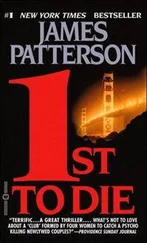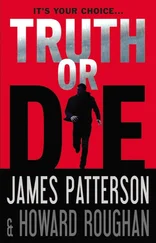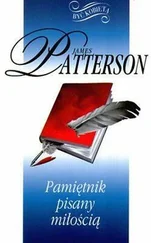Back in New York, my family was in jeopardy while this jackass pulled my chain. As Leahy put the cigarette to his lips again I smacked it out of his hand.
“Stop fucking around with me!” I said. “What. Is. The. Problem.”
“The military managed to convince the president that this thing can be taken care of with conventional weapons. They have satellite imagery of some animal nesting sites, and they want to use napalm on them. Imagine. They think they can bomb all the critters to kingdom come. They don’t want to listen to reason anymore, Oz. They just want to trot out their toys.”
He shook out another cigarette. “To a hammer, everything is a nail,” he said, and lit the cigarette.
“But that’s nuts, Leahy. Isn’t President Hardinson known for being a moderate? A pragmatist? Mrs. Reasonable?”
Leahy looked around the colonnade.
“We’re probably bugged. I should know, shouldn’t I? But screw it. Who’s around to listen? This is top secret, Oz. Mum’s the word, understand? The president’s daughter is dead.”
Huh? I did a double take.
“What?” I said. “Allie?”
Leahy nodded.
“It’s being kept out of the press for now. The way I heard it, she told the president that Dodger had run away. But he hadn’t. She’d hidden him in a crawl space above the family’s quarters. That’s where they found her. The dog had…well. You can guess the rest.”
“Who found her?”
“Secret Service. The president borrowed a gun from an agent and put the dog down herself. She’s just not herself right now. She’s signing everything the military puts in front of her.”
“Shit,” I said.
“Shit is right,” Leahy said. “A shit is what they don’t give about the fact that this is an environmental issue. They don’t want to hear from any more scientists. They want blood, and they’re going to get it.”
MACDILL AIR FORCE BASE
FOUR MILES SOUTH-SOUTHWEST OF TAMPA, FLORIDA
AIR TRAFFIC CONTROL officer Lieutenant Frank White stirs milk into the first coffee of his shift with studied nonchalance as he steps onto the main floor of the control tower. As he crosses the room to his station, the lanky thirty-year-old is thinking ruefully about the fishing trip he was planning on taking this weekend before the airwaves became a network of doomsday theories. He’s focusing on trying to keep his eyeballs from rolling out of their sockets.
MacDill is a backwater air refueling base, and his job is usually a cakewalk. The hardest part is trying to keep twenty-three-year-old recruits with thirty hours’ flight time behind their wet ears from coming in too hot and turning the tarmac into a pizza oven.
White blinks down at runway 1, where, for some reason, two dozen F16 Falcons are powering up along the taxiway.
He gawks as a black B2 stealth bomber touches down on runway 2.
This is no fucking joke, he mumbles as he stands, still absentmindedly stirring his coffee.
All the fighters are bristling with underwing ordnance. One of the aircraft maintenance engineers in the locker room swore that they are all incendiary in nature—powdered-aluminum thermite bombs, magnesium, white phosphorus. Said he couldn’t be certain, but the B2s looked like they were carrying thermobaric daisy cutters.
Shit, White thinks. They could be goddamn nukes for all he goddamn knows.
The encrypted chain-of-command phone by his radar station rings twenty minutes later. He’s been drinking the coffee and is almost feeling half conscious now. The orders he receives from the phone are choppy and quick with terse military precision. They seem to have not the slightest whiff of bullshit in them.
“This is NORAD command at Cheyenne. Who am I speaking with?”
“Lieutenant Frank White.”
“Listen up, White. I don’t have all the coordinates in front of me, but you are to clear all civilian aircraft south of Tampa and north of the Keys. Clear the deck up to a ceiling of eighty-five thousand feet.”
White looks at his shadowy reflection in the control-tower glass and squints for a moment, picturing the area in his mind.
“Isn’t that Everglades National Park?”
“Didn’t hear that last transmission, son. What did you just say?”
Oh, shit, Lieutenant White thought. What is this? What’s going on?
“I said of course, sir. South of Tampa and north of the Keys.”
In a moment he is at one of the radar stations, working on carrying out the orders. The two-way crackles in his earpiece.
“Tower, this is two-five-three. Our preflight is complete. Are we clear for takeoff?”
White sits up. Two-five-three is the call sign for one of the B2s.
“Yes, two-five-three. You are clear on runway one.”
Clear for what, I don’t know, Lieutenant White thinks, slurping the dregs of his coffee as the massive aircraft begins to roll onto the airstrip.
NORAD OPERATIONS CENTER
CHEYENNE MOUNTAIN AIR FORCE STATION
COLORADO SPRINGS, COLORADO
WHEN THE ALL-HANDS-ON-DECK horn sounds throughout the compound that morning at nine in the a.m., it can be heard clearly all the way down the mountain, in the leafy suburbs of Colorado Springs.
The newer residents of the town who notice the braying alarm may idly wonder if the siren is for the volunteer fire department before going back to their newspapers and breakfasts. Those who have family members working at the station immediately leave their jobs and yoga classes and head to the schools to gather their children.
After exactly five minutes, the alarm ceases. Then the two twenty-five-ton steel blast doors that protect the supposedly nuclear weapons–proof military bunker begin to close for the first time since 9/11.
The corridors and rooms of the facility branch off a wide main tunnel, about as big as a train tunnel, that was bored almost through to the center of the granite mountain. The two-story glass-encased main operations center is at the end of the network of rooms nearest the mountain’s westernmost slope. In it, air force techs sit at cubicles, calling orders into headsets as they listen to the squawk and crackle of military radio traffic.
As one enters the room, the forward and right-hand walls are taken up with screens as big as the ones at the local multiplex. The forward screen shows computer maps and blinking radar scopes. The one on the right displays a flickering patchwork of multiple real-time feeds, a montage of ground-level images taken by the cameras mounted on unmanned aircraft and warplanes currently aloft.
Leaning against the stair rail outside the door of his fishbowl office, lofted above the operations center floor, NORAD commander Michael McMarshall stands listening to the staff trading codes and coordinates back and forth. He whispers a furtive Hail Mary for his men and dry-swallows the last three Advil out of the plastic bottle in his hand.
McMarshall had been the CO during the first chaotic hours of 9/11, and this ball of wax is looking like it’s going to be a mite bit worse.
He returns to his office and stands behind his desk, an architect’s drafting table ratcheted up to midriff level. At work, he always stands, due to a training-flight crash that injured his back thirty years ago.
He flips through a stack of photographs. The images are from the military’s most advanced Lacrosse satellites and unmanned aerial vehicles. Ground-penetrating radar and thermal infrared sensor systems have picked up some very disturbing data. Shockingly large pockets of animal swarms, as they are now being called, have aggregated in virtually every corner of the country.
Читать дальше












